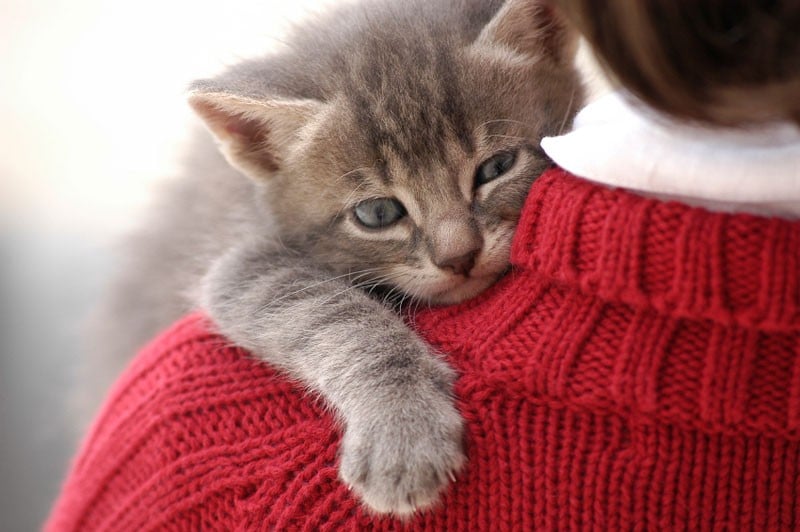
Since your cat can’t tell you where it hurts, you’ll have to be on the lookout for problems. Let’s talk about some cat illness symptoms you should know about. Pay attention to changes in your cat’s behavior as this can indicate signs of illness. Cats tend to disguise signs of pain and illness as a throw-back to their wild days.
Elimination problems
Cats may experience a number of issues involving urination, defecation, and litter boxes.
Some urinary tract problems can be life threatening. FLUTD (feline lower urinary tract disease) is a label for a group of problems that can involve crystals, stones, infection, or inflammation.
Cats self-groom regularly, but excessive licking in the anal or groin area can be a sign of illness. If your cat is urinating more often than normal, this can be a sign of an illness such as diabetes.
Occasional constipation is common in cats and is most often caused by hairballs. Treatments are available for this, and include store bought hairball remedies as well as veterinarian prescribed treatments such as lactulose.
Constipation over the long term may lead to a serious bowel condition known as megacolon. Impacted anal glands may present and will require treatment.
If your cat is howling or crying out while using the litter box, or makes frequent but unsuccessful trips to the box, she may have some physical problem that needs to be looked at. Also, a common sign of trouble is scooting across the floor while dragging the rear end.
If you notice that your cat is not using the litter box, always assume a physical cause may be at fault. If your cat is not urinating or defecating or is missing the litter box, contact your veterinarian.
Other problems to look for are blood in urine or feces, including black tarry stools. If your cat has diarrhea, it may lead to dehydration, which can be fatal.
Eye and mouth problems
Check your cat’s eyes for pupils of uneven size, cloudiness, or discharge. The nictating membrane, or haw, is a “third eyelid” that you will sometimes see when a cat’s eyes are open. This is often an indication of disease.
Ulcers in the mouth, bad breath, and loose teeth are signs of disease. Pallor of the gums and lips is a sign that your cat may be anemic.
Hair and skin problems
Poor coat or problem skin can be a sure sign of cat illness. In fact, the coat and skin of your cat can be used as a measure of overall health.
Certain cat illnesses will manifest as poor or oily looking coat. In addition, if a cat stops grooming, it’s a sure sign of trouble.
Also look for excessive dryness or flaking, skin growths, hair loss, and any kind of swelling or skin eruption. Parasites on the skin are usually easily spotted. Check your cat at least once a week.
Domestic felines may experience other health problems for sure, but these are a few of the major categories. Keeping an eye on your cat’s normal routine and being sensitive to any of the above problems is an essential part of cat care.





